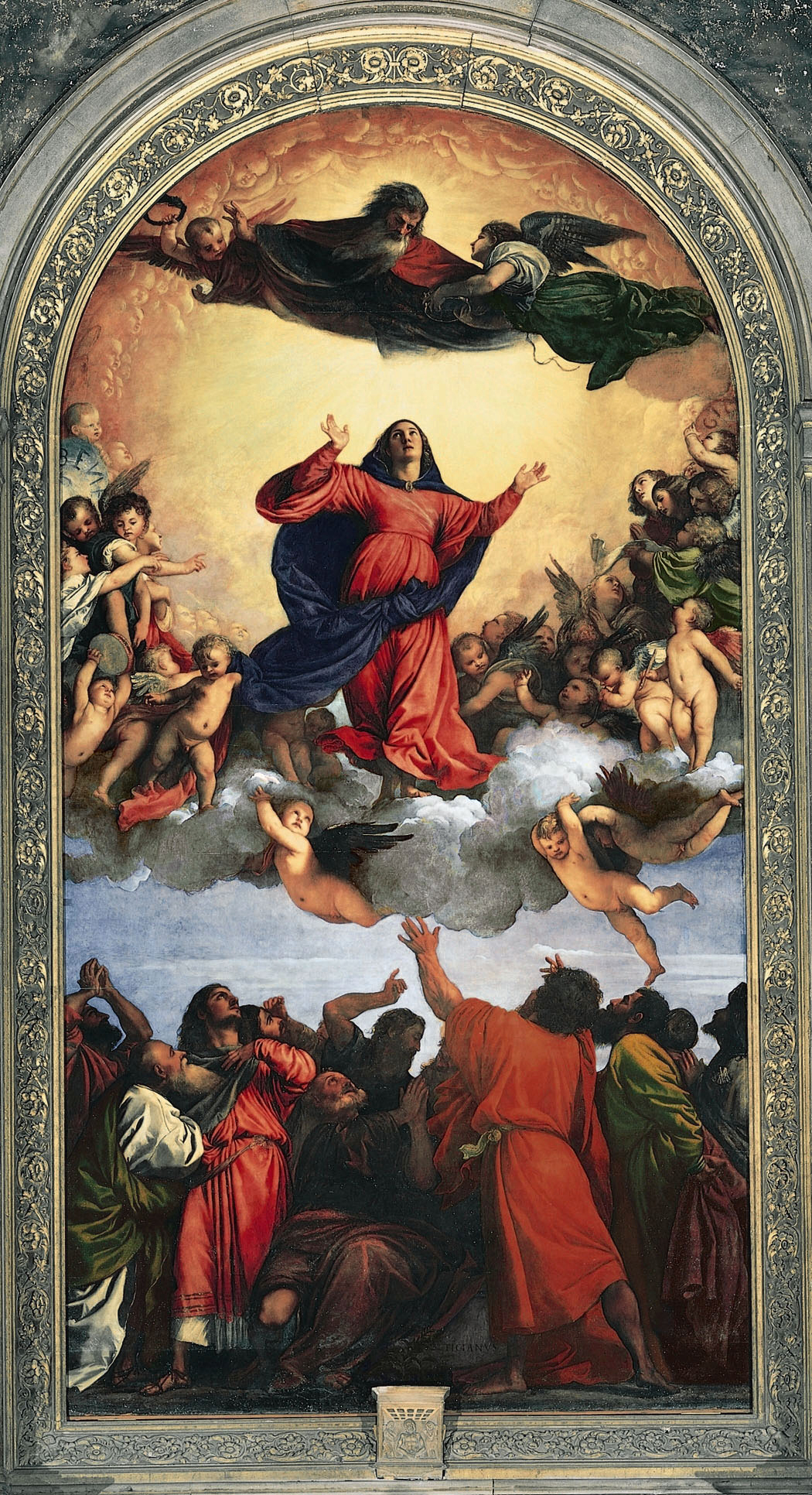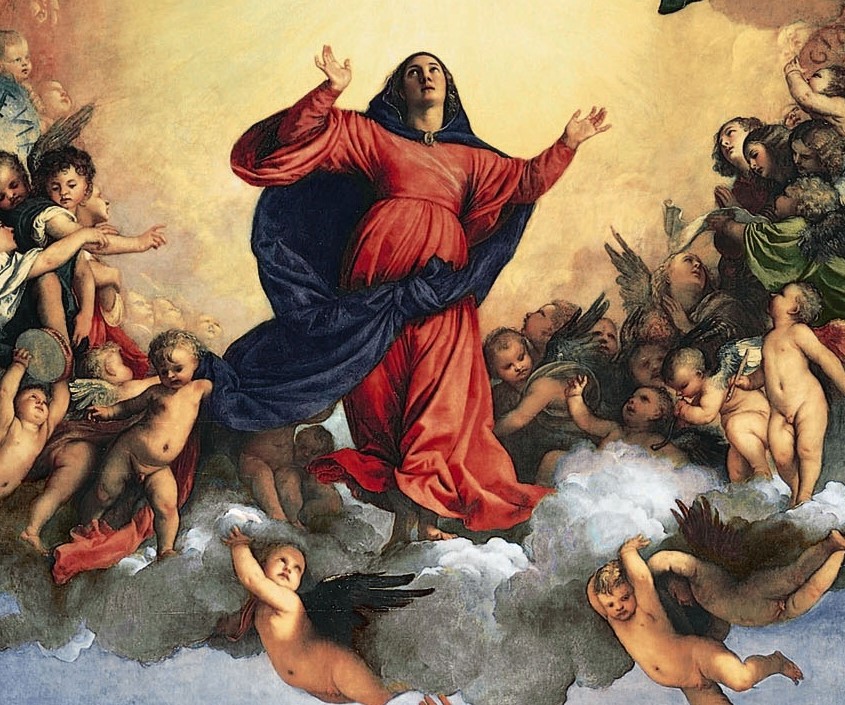Taught By God: Toward an Understanding of the Assumption
Fr. Donald Macdonald, SMM
I t was suggested in a book tracing the footsteps of St. Paul, that to do this properly we need to think of Paul the man not the theologian. This puzzles me. If ’conversion’, ‘revelation’, ‘faith’… which made up Paul’s theology, were just veneer or whitewash, part of a theoretical structure burying the real man, clearly there would be some point in this. Indeed, this may be the case with some people, but even a superficial reading of St. Paul’s letters shows that he looks at life as he looks at himself, through the lens of what God has given him in Christ. He traveled on sea and land through some spectacular scenery, but he never refers to what he saw even by way of illustration. Jesus did this but not Paul. It was through the insight given him in baptism by his risen Lord Jesus that he saw. He was never just a tourist nor a traveler.
Theology – his understanding of life through his faith in God – is not just a topic for a lecture which he leaves aside when he goes home. It is his attempt to explain who and why he is and what he is trying to do. His faith in his risen Lord is the key to Paul’s identity and colors all else in life. It is the perspective through which he interprets life. The man who compares the coming of the risen Lord Jesus into his life to the creation of light (2 Cor. 4:4-6), can only ever after reflect what he sees in wonder. Literally, this stares him in the face whatever he is, and is the reason why he travels. In that light, the distinction between Paul the man and the theologian seems unreal.
IF YOU BELIEVE, I LIVE
His letters are an attempt to share what he sees with others. His first letter to the Thessalonians reminds the people there that he arrived in their city, ” ready to share with you not only the gospel of God but also our own selves . . . ” (1 Thess. 2:8). His message came with the gift of his person. As far as Paul was concerned, there was no distinction between what he said and what he did. This does not suggest take it or leave it. Their faith is a matter of life or death to him; “ . . . for now we live, if you stand fast in the Lord” (1 Thess. 3:8). The encouraging news of his people’s faith really does put new life in him. lt matters so much.
The further news of how well they are living the core of the gospel – genuinely loving each other as an expression of their love of God leads Paul to pay them a superb compliment. There is no need to write to them about this, he says, since in view of how they are living, you yourselves (very emphatic) have been taught by God . ” (1 Thess. 4:9). The word ’taught by God’ (Theodidaktos), occurs only here in the New Testament. It suggests that their authentic grasp of living the core of the gospel so well comes not from his or his colleagues’ teaching, but from God himself. They appear to be the genuine article, and the delighted apostle feels that he knows why.
TAUGHT BY GOD
This brief sketch may help us understand something of the Assumption of Our Lady. Some suggest today that her Assumption is an irrelevance. To be taken up to heaven means to be taken away from us. The woman of faith, first of the disciples, living on earth two thousand years ago, that we can claim to understand and identify with. An existence outside of our space-time continuum on earth, on the other hand, is literally beyond us. So the distinction is made between the woman of faith and the woman assumed, like the suggested difference between man and theologian in St. Paul.
I suggest that Our Lady’s faith on earth, like that of St. Paul, was everything to her. It colored all she did and explained who she was. Faith and its implications were not put to one side, for example, while she dealt with the household chores. As with St. Paul, these both are one in her. She was blessed because she believed, not least in the integrity and wholeness that would be hers because of her fidelity. Sinless from her conception and faithful all her life, Mary’s would be a progressively simple insight as she grew at one with the will of God.
“Hail, full of grace/Rejoice, you who enjoy God’s favor“ (however we translate it), is Mary’s name and identity in the gospel. She is a complete capacity to receive whatever God chooses to give her. Her assumption is the ultimate witness to that reality. She has so taken God in Christ to herself through the Spirit, that as with Paul in lower case, giving himself with the word of God, Mary too reflects the wonder of the Word as she gave herself totally through faith, motherhood and discipleship.

Painting: The Assumption of the Virgin: Italian Renaissance Artist and Painter Titan (1515 -1518)
This painting resides in Venice in the Basilica di Santa Maria Gloriosa dei Frari.
Editors Note: Two additional articles on the Assumption may be found on this website: The first, authored by Pope John Paul II, may be found here and is entitled: The Assumption of Mary: by Saint Pope John Paul II. The second article was written by Fr. Gaffney, SMM for The Queen: Q&A section of this website and is entitled: The Assumption of Mary: Relevance for Today? and may be found here.
As we delight in Mary assumed into heaven, open to whatever influence she can bring to bear on us, she can only draw us to see in faith what now holds her – the wonder of the glory of God on the face of Christ.
Mary assumed, means only that she has broken through the limitations of faith and life on earth, but has not broken away from us. Held now by the glory of God on the face of Christ, she sees us in him. To be with the Lord forever is the point and promise of life. As a present presence now in Christ, not just an evocative memory of yesterday, she draws us to what she now sees.
The insight of faith is primary for Mary. Now she has been graced to go beyond it. This is to fulfill not diminish the woman. We can glimpse this only in so far as we are taught by God. The woman of yesterday is no less real today. Differences between then and now can only be reconciled if we look at Mary, as Paul, through the insight of faith. Only in so far as our faith is as real as that which thrilled the New Testament shall we too see. Without it we lack perspective. If Paul compares the coming of Christ into his life to the creation of light, what can it have meant to Mary? Her response to the gift of God in Christ through the Spirit, was to respond in the total gift of herself. The core of her being is reached: “ , . I am the Lord’s slave. May what you say take place with me” (Lk. 1:38).
The Word became flesh in her having lodged in her heart, and so later in her arms, her home and her life. We have no inkling of the perception of Mary who never ever had the shadow of sin in her person. But surely, as with Paul, her being is thrilled in faith as she exults in God her Savior. It is a dimension of reality through which she viewed life.
Secondly, as with Paul, Mary is at one with her Son, though, again, to a degree that we can scarcely imagine. Shortly after the conception of Christ, the very sound of Mary’s voice in greeting leaves Elizabeth ecstatic, when she feels the child in her womb
leap for joy as she is titled with the Holy Spirit (Lk. 1:39-45). As Paul’s gospel was no disembodied message, so Mother and Son are one as her very presence reflects the Spirit of God. Mary too gives herself in the gift of her Son.
Finally, we can only glimpse this if we are ‘taught by God’. The insight of faith is the key to who Our Lady is and what she does. Reflecting on her who is one person in Christ with us through baptism, and so sharing the same organic life in the body of Christ through knowledge and love, we come to see her as a present reality – a presence, the sound of whose name can cause us to respond like Elizabeth in delight and wonder: ” . . . why has this happened to me,” that the mother of my Lord comes to me?” (Lk. 1:43).
In that light, the assumption of Our Lady can only intensify her presence with us now as we reflect in wonder. She is not an evocative memory of yesterday but a lovely, life-giving presence today. She has not been taken from us. Assumed, she now shares the glory of God on the face of her Son. She is with us, one with us in her Son, holding out the hope that one day we too may be with her reflecting what she now sees.
GOD’S FELLOW-WORKER
St. Paul in recommending his young colleague Timothy to the Thessatonian people, writes of him as, “ . . . God’s fellow-worker . . . ” (1 Thess. 3 :2). The boldness of this was too much for some of those who first copied St. Paul’s letter. They tried to weaken the description, assuming that to see Timothy as ‘God‘s fellow-worker’ was a slip of the pen. So they left out ‘of God’ or replaced it by ’of the gospel’. Attempts were even made to find a weaker word for Paul’s ‘fellow-worker’. This suggests that their perspective was not Paul’s. He builds Timothy up with a superb compliment, and by implication, would apply it to all of us in Christ who try to share our faith.
Our Lady, above all in the Christian community, is surely ‘God’s fellow-worker’. She is at one with him as no one else has ever been. The closer to the Source the more effective can we be. As we delight in Mary assumed into heaven, open to whatever influence she can bring to bear on us, she can only draw us to see in faith what now holds her – the wonder of the glory of God on the face of Christ. Time in her lovely company finds her giving us her Son in the gift of herself. Ultimately, all of us are taught by God, or how can we see?



